Finding Lt. Robert J Rogers, Pt 3
Learn the fascinating history of Lt. Rogers, a World War II Hero from Decatur and the winding journey the author took to discovery. The story will uncover heroism, classified documents, and family lore. Robert J. Rogers received the Distinguished Service Cross (posthumously) for his heroism in connection with military operations while serving serving as an Officer of a B-24 Heavy Bomber in the 460th Bombardment Group.
Catch Up Here:
Part 3: The combat history of Lt. Rogers in Rogers Rangers
By G. Michael Pratt, Ph. D.
It still doesn’t seem possible does it? Today was a high price to pay. A hell of a way to earn a living if you ask me.
460th BG and Squadron Diaries
The 460th Bomb Group was activated and flew its first mission from Spinazzola, a U. S. built airfield located in southern Italy. The first mission, on Sunday, March 19, 1944, was part of “Operation Strangle” a new campaign designed to interdict enemy supply movements by destroying marshalling yards, rail lines, and ports. The 460th BG’s first targets were the “marshalling yard” (a rail hub with many siding tracks where trains could be disassembled, rearranged and formed) and docks at Metkovi, Yugoslavia. Robert Rogers and his crew were in the 763rd Squadron, one of four squadrons in the 460th Bomb Group. They flew their first mission on B-24 H, Serial Number 41-28698, which the crew had named Rogers Rangers, a nod to the pilot and likely to the 1940 Film Northwest Passage, starring Spencer Tracy as Major Robert Rogers, leader of the famous ranger group in the French and Indian War.[18] The bombing mission was successful and the group returned with no losses. The second 460th BG mission, on Thursday, March 30, 1944 targeted the Luftwaffe (German Airforce) airfield at Mostar, Yugoslavia. There is little information on this mission, but Lt. Rogers and his crew did not fly that day.

The parallel taxiways, top right quadrant, are the hard stands of the 460th B. G.[16]
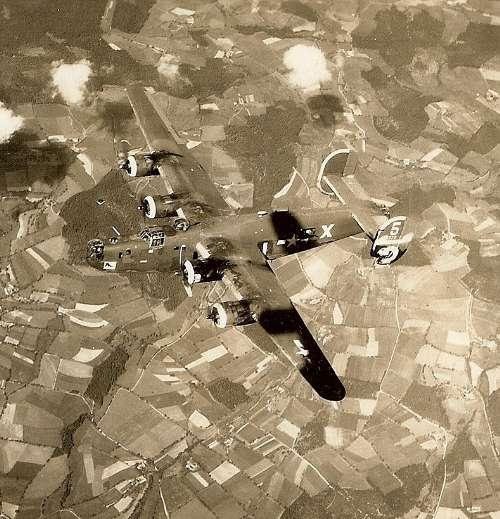
Sunday, April 2 was the 460th’s third combat mission and the second for Lt. Rogers and the crew of Rogers’s Rangers. The crews were awakened at 5:00 a.m. for breakfast and then briefings. The target was again a marshalling yard, this time at Brod, Yugoslavia. The four squadrons of aircraft took off, and then spent the usual prolonged period of forming into a squadron, then group formations, and then joining with other 15th Airforce Bomb Groups heading for Yugoslavia. In-flight issues caused three aircraft to abort, or turn back, before reaching the target. As the remaining 29 aircraft of the 460th approached Brod, clouds obscured the primary target and so the group was redirected to the bomb the secondary target, the Luftwaffe airfield at Mostar. As they started the “bomb run”, the final approach to the target, Roger’s Rangers and its crew were lost at about 11:30 a.m.[19]
The World War II Army Airforce, like all bureaucracies, tried to keep accounts of everything. When aircraft crashed or went missing, a MACR (Missing Air Crew Report) was filed. These were classified until after 1973. My father flew combat missions until the last days of WWII and on the night of May 11-12, 1945, three days after VE Day, he crashed a B-17 while attempting to land in “below minimum” weather conditions. One crew member was killed and the rest were injured, but survived. I had seen photographs taken after the crash, but in the early 1970s, I filed a next of kin request and received portions of the still classified MACR report on his crash. I have since obtained the full 11-page report. I’ve read several other MACRs while seeking information for friends. The MACR for Robert Rogers’ crash is unusually long at 34 pages, because many of the questions raised by the crash could not be answered until after the war when surviving witnesses were debriefed by the Airforce officials.
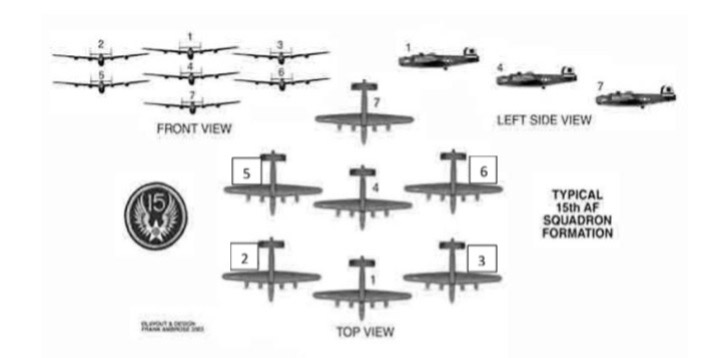
Rogers Rangers was flying in the number 3 position (above). The 763rd Squadron was the Group Lead, and were the first aircraft to approach the target. The formation had turned on the bomb run and were flying at 20,000 feet. Six airmen in nearby aircraft reported what happened next.
- 2nd Lt. George A. Swazey Jr. (pilot of the aircraft in position 6) noted that Rogers “lurched” and slipped towards him forcing him to “duck” under Rogers Rangers’ right wing to avoid a collision. Rogers then “broke away to the left” and “dropped his bombs in train. As his last bombs left, he peeled sharply away and down…I was unable to see his trouble at any time.”
- Staff Sgt. Clarence Outten (tail gunner on the same aircraft) reported a “crack and blast of flame” from Rogers’ number three engine. “…the aircraft maintained level flight for a few seconds then went into a side dive to the right and passed from my vision.”
- Staff Sgt. John Dunn (tail gunner on the aircraft in position 1) also reported the number three and four engines (on the right wing) were out first and the ship slipped off to the right, then the number two engine (left inboard) went out. Dunn watched “Roger’s Rangers” fall to the ground and saw one crewman bail out, but reported the parachute did not open.
- Staff Sgt. Theodore F. Best (right waist window of the aircraft in position 1) saw the ship go “past our tail in a wide circle going down. Number three and four engines were burning and flames were shooting out of the bomb bay. The ship continued its down ward circle and approximately half way down one man bailed out, the chute did not open but just streamed out…”
Two other airmen noted Roger’s aircraft left the formation with fire in the bomb bay, fuselage and left engine or wing. One of these also saw a falling airman with a streaming parachute. The aircraft made a wide descending circle, became invisible in clouds, but later reappearing in a second circle of descent. It was seen to explode upon impact or just before impacting the ground.[21]
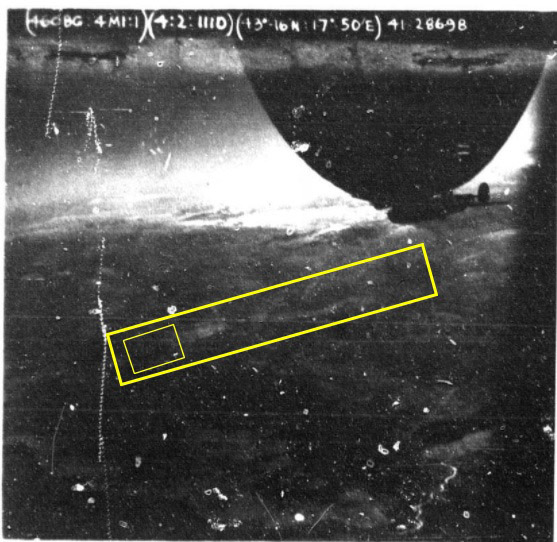
was captured in this photo taken from another aircraft in the formation. From the MACR. 22
The aircraft had been struck by anti-aircraft fire known to aviators as Flak, an abbreviation from the German term Fliegerabwehrkanone (air-defense cannon). The airfield defenses at Mostar included three heavy and six light Flak positions within 1.5 km of the airfield.[23] The three “heavy” batteries used the highly effective and feared ‘Eighty-Eight’ (in German, Acht-acht), 88 mm cannon. They were usually grouped into an air-defense battery of four to six cannons assisted by an early computer or early radar fire control system that calculated altitude and speed of the bombers for better firing accuracy. The Eighty-Eight fired a 20-pound explosive shell able to inflict damage sufficient to destroy an aircraft within 30 yards of detonation and inflict serious damage out to 200 yards.
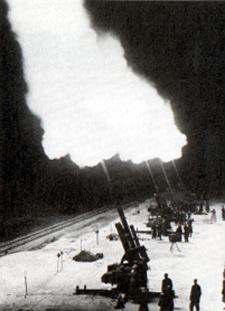

A four-gun battery firing at night, and loading the “Eighty-Eight.” [24]
The effective ceiling of the 88 mm was 34,770 ft,[25] well above Rogers Rangers 20,000 ft bombing altitude at Mostar. Aircrews feared flak the most. Enemy fighter attacks were fast and devastating, but gunners could shoot back and pilots could take evasive action.
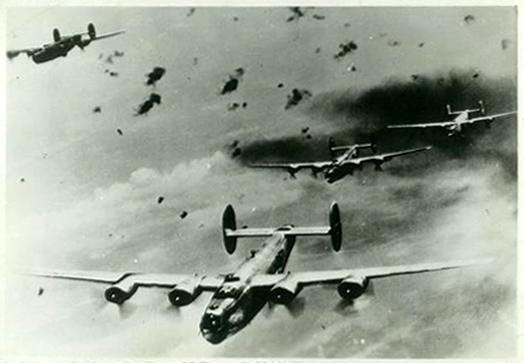
Flak first appeared as visible puffs of dirty black or brown smoke ahead of the formation. When the flak barrage was at your altitude and you were coming increasingly closer, an airman watched the puffs begin to show a flame in the center. Then came the rattle of small splinters striking the aircraft and then came nearby explosions with a distinctive, deafening, thump or crack that shook aircraft violently, hurled larger pieces of shrapnel through the aluminum skin and into the vitals of the aircraft, and also its crew. Direct hits blew off engines and entire wings or tore off the nose or tail. Resulting onboard fires were fanned by one-hundred-plus mile per hour winds generated by the airspeed. Since flak batteries were usually sited to protect target areas, the pilots in the bombing formation were unable to take evasive action while lining up on the target and the gunners had nothing to shoot at. The airmen had no defense against flak; they just had to “take it.”
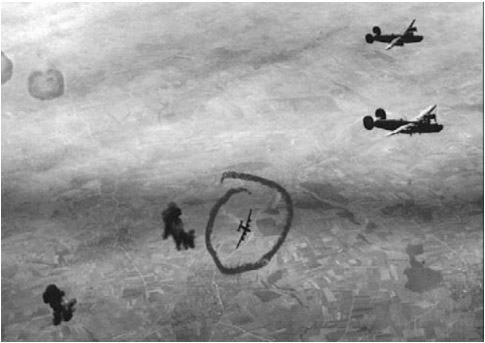
Fortunately, most flak hits were survivable. During my father’s 28 combat missions, his aircraft were holed by flak fragments at least ten times. Comments from his letters and microfilm of 100th B.G. maintenance records indicate the hits on dad’s aircraft ranged from “a nick in one propeller” to “picked up a few holes” to “serious Anti-Aircraft damage” to a direct hit through the left wing by a dud 88 mm shell. This shell passed outboard of his left outboard engine (No. 1) severing the wingtip fuel tank lines and causing the engine to fail. His B-17 on this mission, 42-97071 LD-P, Andy’s Dandys, straggled home on three engines, falling far behind the rest of the 100th Bomb Group. Neither my dad or his crew were ever injured by flak splinters. Following the war, Wade Pratt hunted rabbits and pheasants, but only with a single-shot shotgun. When asked why, he told me “nothing deserves to be shot at like we were by the German flak.”
Lt. Rogers and his crew were the first to be lost from the 460th Bomb Group. The dramatic damage and crash of the bomber and its entire crew weighed heavily on those who completed the mission.
763rd Bombardment Squadron (H).
SUNDAY 2 April 44.
It still doesn’t seem possible does it? Today was a high price to pay. A hell of a way to earn a living if you ask me. Roger’s Rangers they call themselves, all good boys. What an outfit! …The boys are quiet tonight. The usual joking, arguments, even the bitching, have taken a back seat to thoughts of boys we lost today, and wondering what they are cooking up for tomorrow’s mission. Things are getting rough all over.
761st Bombardment Squadron (H).
SUNDAY 2 April 44.
The third mission was flown. Cloudy weather prevented the dropping of the bombs on the primary target and Mostar, the secondary target, was the victim. Of the thirty-two planes scheduled, twenty-nine attacked the target. Heavy flak brought down one of the ships with a direct hit. No losses were sustained by this squadron. Comments began pouring in from all directions as to the effectiveness of flak from the nervous, excited crews. It seems flak has been underestimated.[28]
Historical Records of 460th BG and Squadron Diaries
Within 48 hours of the crash the MACR report process commenced with interviews of crew members on the surrounding aircraft, an inventory of the engine and machine gun serial numbers and an accounting of the crew members known to be involved. As more information surfaced, the form was updated.
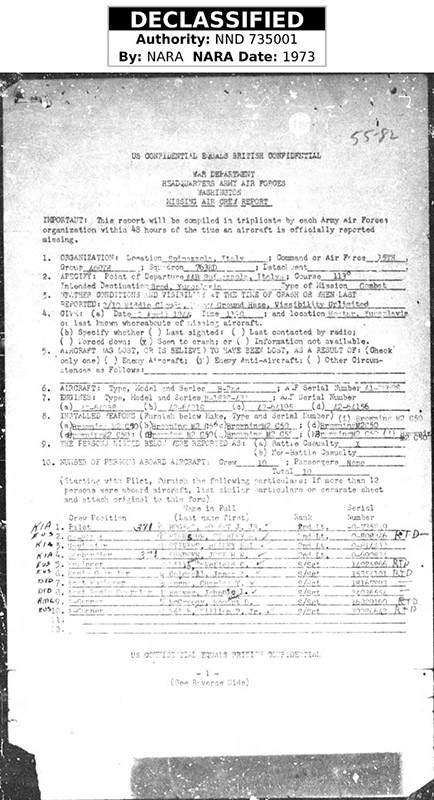
Back in Decatur, the Robert Rogers family, still at 204 South McDonough would have received a telegram from the War Department telling them their oldest son was Missing in Action. It is likely that the Group or Squadron CO, or perhaps the Group’s Chaplin also sent a letter with, perhaps, a little more detail. But there were many details the family could not know; the full extent of their son’s heroism would not be uncovered until after the war.
End of Part 3
(work cited 1-15 on previous posts)
[16] Spinazzola Military Airfield, American Air Museum in Britain http://www.americanairmuseum.com/place/168164
[17] 460th BG photo https://15thaf.org/55th_BW/460th_BG/Aircraft/images/X-large.jpg
[18] Northwest Passage, 1940 https://en.wikipedia.org/wiki/Northwest_Passage_(film)
[19] Historical Records of 460th BG and Squadron Diaries, May 20, 1044: 9, 16. http://15thaf.org/55th_BW/460th_BG/History/PDFs/April%201944.pdf
[20] modified from http://ancientlights.org/images/veterans/image009.jpg
[21] Adjacent crew reports, MACR #3971, U. S. Army Air Forces: 10-16. https://www.fold3.com/image/1/28619544
[22] Photo from MACR 3791:9 https://www.fold3.com/image/1/28619544




